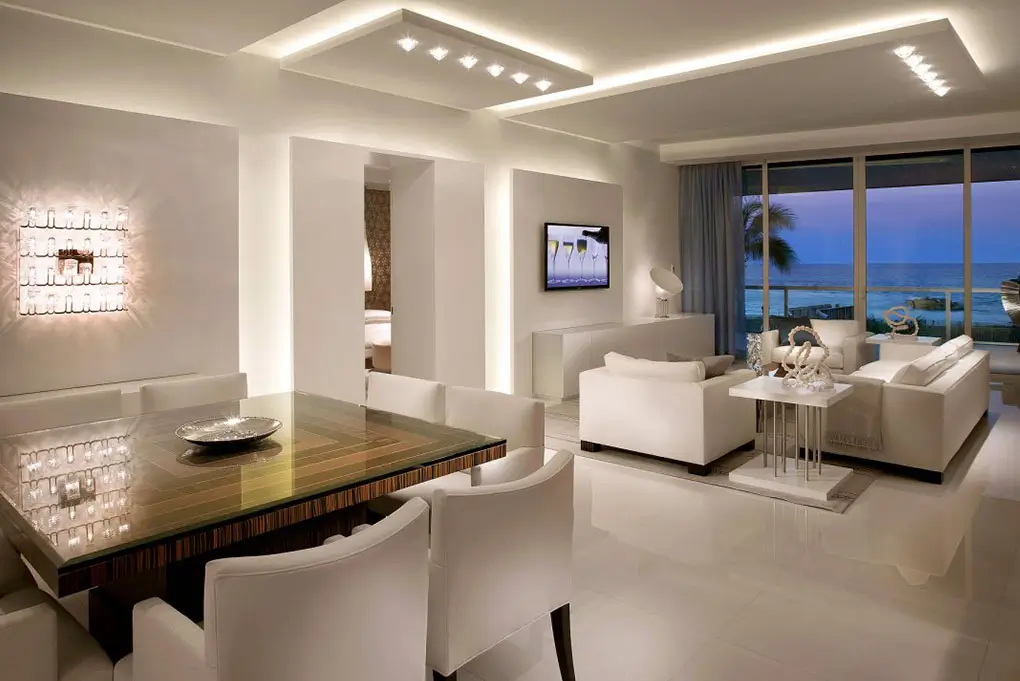No sugar-coating: most Greek buildings leak energy like a cracked amphora. More than half were built before modern standards, heat waves are longer, winters still bite, and bills refuse to behave. The upside? Greece is one of the easiest places in Europe to slash consumption fast—if you do the right things in the right order.
At Renovator, we design and deliver end-to-end energy upgrades: exterior thermal façades (ETICS with EPS 100/150 or mineral wool), high-performance windows and doors, heat pumps, solar PV + batteries, smart controls, ventilation with heat recovery, and the paperwork to actually get it approved. This is the Renovator approach, straight-talking and engineered for results. This guide is the straight-talking blueprint: what works, what wastes money, typical costs, available subsidies (e.g., Exoikonomo 2025, Renovate & Rent) and how we run projects in Athens and across Greece.
Why Energy Efficiency in Greece Is Non-Negotiable
-
Real savings: Done properly, upgrades can cut 40–70% of annual heating/cooling costs.
-
Comfort you can feel: No drafts, no frying pan summers, stable indoor temps, quieter rooms.
-
Compliance: KENAK sets minimums during major renovations; every sale or rental needs a valid EPC (Energy Performance Certificate).
-
Asset value: Higher EPC rating = better resale and rental demand, plain and simple.
-
Climate reality: More cooling degree days, pricier energy, grid stress—you want a home that’s efficient, resilient, and future-ready.
Brutal truth: throwing a heat pump into an uninsulated box is like putting a turbo on a rusted Beetle. The right sequence—envelope → airtightness/ventilation → systems → renewables → smart controls—is where the ROI lives.
The Priority Order (Don’t Skip This)
-
Envelope first: external thermal façade (ETICS), roof/loft insulation, ground/floor insulation, correct detailing of thermal bridges.
-
Airtightness & ventilation: stop uncontrolled leaks; add HRV/ERV so fresh air doesn’t waste energy.
-
Efficient systems: heat pump for space heating/cooling and domestic hot water; low-temp emitters (fan coils, underfloor).
-
Renewables: solar PV with net metering; add battery if you want resilience and better self-consumption.
-
Smart controls & metering: zoning, thermostatic valves, predictive thermostats, shading automation, and real-time monitoring.
Miss the order, and you’ll spend more to save less.
1) Exterior Thermal Insulation (ETICS)
What it is: a multilayer system applied to façades: adhesive mortar, EPS 100/150 or mineral wool, mechanical anchors, basecoat + fiberglass mesh, primer, and a breathable decorative finish (silicone/acrylic/silicate). In Greek RC buildings (columns & beams exposed), proper ETICS design is the only serious way to kill thermal bridges around lintels, columns, balconies, parapets.
Materials we specify by context:
-
EPS 100/150 for most façades (great λ, light, cost-effective).
-
Mineral wool (stone wool) where fire resistance and acoustics matter.
-
XPS in inverted roofs or below grade (moisture-exposed zones).
-
Polyurethane foam only for very specific details, not as a lazy substitute for proper ETICS.
Thickness: put away the 3–5 cm nostalgia. Real efficiency in Greek climates starts from 8–10 cm, often more for A/B EPC targets.
Benefits:
-
Up to 25–35% reduction in heating/cooling demand just from the envelope.
-
Warmer interior surfaces → no condensation/mold.
-
Longer building life; exterior finish protects against rain, UV, and micro-cracking.
Indicative cost: €50–€70/m² installed (system-dependent).
Subsidies: Exoikonomo typically funds a large share when the building/EPC conditions are met.
Roof insulation (flat roofs & pitched roofs):
-
Flat/inverted roofs: XPS over waterproofing with protection layers; optionally “cool roof” reflective coatings.
-
Pitched roofs: stone wool between/over rafters + breathable membranes and proper ventilation paths.
Floor/ground insulation: XPS/PU under screeds or on basement ceilings to stop cold floors and stack effect.
Blunt advice: if a quote is cheap because it cuts anchors, mesh laps, corner beads, primer, or uses bargain-bin finish, walk away. ETICS is a system, not “stick some boards and hope.”
2) High-Performance Windows & Doors
Old frames are a 15–20% energy hole. Replace with thermally broken aluminium, uPVC, or timber-aluminium hybrids.
What to look for:
-
U-value ≤ 1.3 W/m²K (lower is better).
-
Double or triple glazing with low-e coatings and argon fill.
-
Warm edge spacers to reduce perimeter condensation.
-
G-value (solar factor) balanced to Greek sun exposure: use shading and selective glass to cut summer gains.
Bonus wins: vastly better acoustics in Athens’ noisy streets and stronger security (multi-point locks, laminated panes).
Indicative cost: €300–€500 per window (size/features dependent) or €280–€450 per m² of glazing for larger openings.
3) Airtightness & Ventilation (HRV/ERV)
Greece has humidity and cooking habits that fog windows and feed mold if you simply “seal the house.” The fix is controlled ventilation:
-
Airtightness detailing: gaskets, tapes, proper sealants, fix those “Swiss cheese” service penetrations.
-
Mechanical Ventilation with Heat Recovery (HRV/ERV): recovers 70–90% of heat from exhaust air; keeps CO₂/odors down without wasting energy.
Where it shines: bedrooms (night-time CO₂), modern kitchens, and tight envelopes.
Indicative cost: centralized HRV for a typical apartment €2,000–€3,500; decentralized units €600–€900 per room.
Reality check: skipping ventilation after heavy insulation is the fastest route to “why is there black stuff on my ceiling.”
4) Heat Pumps (Heating, Cooling, DHW)
Modern air-to-water heat pumps are Greece’s sweet spot: they connect to underfloor, fan coils, or low-temp radiators. Air-to-air systems are compact for flats; ground-source is premium efficiency for larger plots.
-
COP 3.5–5.0 (instantaneous), SCOP ~4.0 (seasonal).
-
Work effectively down to –15°C, so mountain regions aren’t excluded.
-
Pair with buffer tanks, mixing valves, and proper zoning.
Domestic Hot Water (DHW):
-
Integrated heat pump DHW cylinders or HPWH units slash water heating costs 60–70%.
-
Solar thermal is fine, but PV-driven HPWH gives more year-round flexibility and simpler maintenance.
Indicative cost: €8,000–€15,000 fully installed for a typical house (sizing matters).
Pro tip: we right-size; oversized heat pumps short-cycle and waste money.
5) Solar PV, Batteries & EV-Ready Homes
Greece has 250+ sunny days/year. That’s a polite way of saying: you’re leaving money on the roof without PV.
-
Net Metering: produce by day, offset by night.
-
Batteries: raise self-consumption, keep critical loads on during blackouts, and prep for dynamic tariffs.
-
Hybrid inverters: PV + battery with backup function.
-
Orientation & tilt: design matters; we don’t guess.
Indicative cost:
-
5–6 kWp PV: €7,000–€10,000.
-
5–10 kWh battery: €3,500–€7,000 added.
-
ROI: ~6–8 years (often faster with subsidies), then years of low-cost power.
EV charging: cheap to pre-wire now, expensive to retrofit later. We make homes EV-ready even if you don’t drive one yet.
6) Smart Controls & Real-Time Monitoring
Small daily optimizations add up:
-
Smart thermostats with geofencing and scheduling.
-
Zoning (each room its own logic); TRVs on radiators; fan-coil controllers.
-
Automated shading (external where possible) to smash summer gains.
-
Sub-metering + dashboards for electricity, heating loops, and hot water.
When you see the graph, you fix the behavior. We install the graph.
Regulatory Backbone (Greece)
-
KENAK: the rulebook for building energy performance.
-
EPC: mandatory for rentals/sales; we issue pre- and post-renovation EPCs to document the jump in class (e.g., D → B or better depending on scope).
-
Permits: many ETICS and PV works go through ΕΕΔΜΚ (Minor-Scale Works), but it depends on façade changes, zones, and building status.
-
Condominiums: multi-owner approvals are often required; we handle the boring but critical paperwork.
Subsidies: Exoikonomo 2025 & Renovate & Rent
-
What they typically cover: insulation, frames, heat pumps, solar PV, smart systems, audits, EPCs.
-
Rates: commonly 40–60%, income-dependent and subject to program rules.
-
Priorities: main residences often rank first; rental-focused schemes exist under Renovate & Rent if affordability criteria are met.
Are subsidies guaranteed? No—they are not automatic. The good news: well-prepared files with realistic designs, correct EPC modeling, and complete documents get approved far more often. Renovator’s applications have very high success rates because we engineer the numbers to match reality, not wishful thinking.
Details change; we’ll give you the current rulebook during your assessment.
What It Costs (Realistic Ranges)
All figures are indicative and reflect typical Athenian projects in 2024–2025 pricing. Your building geometry, access (scaffold/lift), brand choices, and market conditions move the needle.
-
ETICS façade insulation: €50–€70/m²
-
Roof insulation: €35–€60/m²
-
Windows/doors: €280–€450/m² of glazing or €300–€500 per unit (small openings)
-
Air-to-water heat pump system: €8,000–€15,000
-
Fan coils / low-temp radiators: €400–€1,000 per room
-
Underfloor heating (wet): €35–€60/m² (new screed)
-
HRV/ERV ventilation: apartment €2,000–€3,500; house €3,500–€6,000
-
PV 5–6 kWp: €7,000–€10,000 (add €3,500–€7,000 for 5–10 kWh battery)
-
Smart controls & metering: €800–€2,500 depending on zones/brand
Subsidies (when applicable) routinely knock 40–60% off eligible items.
Example Scenarios (Ballpark)
A) 150 m² detached house (Attica)
-
ETICS ~200 m² @ €60/m² → €12,000
-
Roof insulation 120 m² @ €45/m² → €5,400
-
Windows 22 m² @ €380/m² → €8,360
-
Heat pump (12–14 kW) + fan coils → €10,500
-
PV 6 kWp → €9,000 (battery optional +€4,500)
Gross total: ~€45,000 (battery excluded).
With 50% subsidy on eligible items: net ~€25,000.
Annual savings: €1,800–€2,600, depending on baseline.
Payback: ~7–10 years net (often shorter with battery-assisted self-consumption and tariff optimization).
B) 90 m² top-floor apartment (corner, Athens)
-
ETICS (if part of whole-building project) share: €6,000–€9,000
-
Roof/loft insulation share: €1,800–€2,800
-
Windows (12 m²): €3,600–€4,800
-
Air-to-air high-efficiency system or compact air-to-water + fan coils: €3,500–€8,000
-
PV: depending on roof rights; balcony micro-PV or building roof share.
Gross total: €15,000–€23,000
With subsidy: €8,000–€14,000 net typical.
Savings: €700–€1,400/yr depending on usage and exposure.
Numbers are illustrative; we model your exact case before you spend a euro.
Case Studies (From Our Portfolio)
1972 Athens Apartment
Scope: façade insulation (as part of building ETICS), new thermally broken frames, air-to-water heat pump + fan coils.
Result: ~45% bill reduction; EPC D → B; noticeably quieter interior.
Detached House, Kifisia
Scope: roof insulation + ETICS, triple-glazed windows, 6 kWp PV + 10 kWh battery.
Result: 8+ months/year near-autonomy; summer comfort without over-reliance on AC; almost zero net annual electricity cost.
Commercial Office, Piraeus
Scope: centralized VRF/heat pumps + automation for zoning & schedules; LED + daylighting controls.
Result: ~38% lower operating costs; stable comfort reduced complaints; cleaner EPC for ESG reporting.
Common Mistakes (Don’t Do These)
-
“Heat pump first” with no envelope fix. Your COP tanks; your bills sulk.
-
Cosmetic ETICS: thin boards, bad anchoring, no mesh at openings. It will crack; water will win.
-
Cheap windows with good glass but bad frames. Warm edge spacers and airtight installation matter.
-
Zero ventilation after sealing the shell. Hello, condensation.
-
Ignoring thermal bridges: balconies and beams are Greek classics; we treat them deliberately.
-
Under-sizing emitters: low-temp systems need the right surface area.
-
Paperwork afterthought: subsidies and EPCs demand exact specs. We start with them, not end.
Our Process (How Renovator Delivers)
-
On-site assessment & thermal imaging (where useful).
-
Energy modeling & EPC baseline (KENAK-compliant).
-
Concept design & scope definition (priorities, options, budget).
-
Itemized proposal with ROI ranges and subsidy strategy.
-
Permits & subsidy file (ΕΕΔΜΚ where needed, complete documentation).
-
Installation by certified crews (ETICS, windows, HVAC, PV).
-
Commissioning & balancing (flows, setpoints, controls, dashboards).
-
Post-works EPC to lock in your new energy class.
-
Handover + monitoring plan (we want your bills to actually drop).
We coordinate it all—design, engineering, construction—so components play nicely together.
FAQ (Straight Answers)
How much can I actually save?
A full envelope + systems + PV upgrade typically delivers 40–70% lower heating/cooling bills. PV offsets a big slice of electricity on top.
Do heat pumps work in colder Greek regions?
Yes. Quality units function down to –15°C. Correct sizing and emitters are the trick.
How long does insulation last?
30–40 years with a proper ETICS system and basic maintenance. It also protects the building from weathering.
Are subsidies guaranteed?
No. They depend on eligibility, budget windows, and documentation quality. Our well-prepared applications have very high approval rates.
Can I combine heat pumps and solar?
Absolutely. It’s the most common high-ROI combo for near-zero operating costs.
Is triple glazing worth it in Greece?
For noisy or highly exposed facades, yes. Otherwise, high-spec double glazing with the right g-value and shading may be optimal. We model it.
What about ventilation—do I really need it?
If you insulate and seal, yes. HRV/ERV keeps air healthy without wasting energy and stops condensation.
Can I upgrade an apartment if the building won’t do ETICS?
You can still replace windows, add shading, improve airtightness, use air-to-air or compact air-to-water systems, and insulate ceilings/floors from your side. Whole-building ETICS is best, but not the only path.
How long does a typical project take?
From assessment to commissioning, 4–12 weeks depending on scope, permits, and weather.
Do you handle EPCs and permits?
Yes—audits, EPCs, ΕΕΔΜΚ, and subsidy documentation are baked into our process.
Will I need three-phase power for a heat pump?
Often recommended for larger homes/units. We check your panel capacity and arrange upgrades if needed.
Can I keep my existing radiators?
Sometimes. If they’re sized for high-temperature boilers, we often switch to low-temp fan coils or underfloor to get the best heat pump efficiency.
Why Renovator
-
Integrated delivery: one team, one plan—ETICS + windows + heat pumps + PV + controls engineered to work as a system.
-
KENAK/EPC literacy: we design for the energy numbers, not against them.
-
Craftsmanship: ETICS details, airtightness, balancing, commissioning—it shows on your bills.
-
Subsidy expertise: we assemble strong files and manage the process end-to-end.
-
Forward-ready: solar + battery + EV + smart controls = resilience for the next decade.
If you only want the cheapest quote, we’re not for you. If you want the last renovation you’ll have to think about for a long time, let’s talk.
Call to Action
Ready to stop subsidizing the grid and start investing in your own building? Book a Renovator energy assessment. We’ll model your property, price the right sequence of works, prepare the subsidy file, and deliver an engineered upgrade—not a pile of receipts. Homeowner, landlord, or investor: if you want lower bills, higher comfort, and a stronger EPC, we’ll get you there.
TL;DR for the skeptics:
Insulate properly (ETICS + roof), seal and ventilate (HRV), install a right-sized heat pump, bolt PV on top, and orchestrate it with smart controls. That’s the Greek playbook. We execute it without drama.


